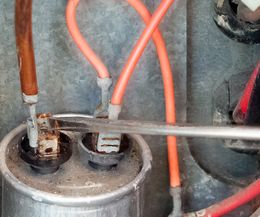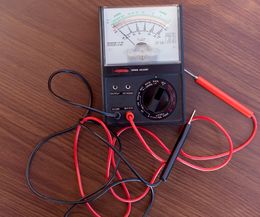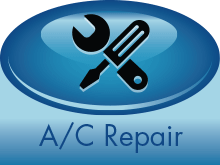Arizona Home Cooling or 12-Tips For Saving Money On Cooling Costs
 Save Energy and Reduce the Cost of Air Conditioning Your Arizona Home
Save Energy and Reduce the Cost of Air Conditioning Your Arizona Home
The cost of Arizona home cooling may well account for forty percent of your 2015 energy bill. But here’s a kicker that you may not realize, especially if you use a yearly averaged energy billing payment plan: Most of the financial outlay for high energy consumption occurs during the blazing heat waves that accompany normal Arizona summers. In fact, the summer cost for cooling the average Arizona home typically accounts for up to seventy percent of your summer energy bill.
But do not despair. By following a few simple yet comfort-efficient methods of home cooling management you can effectively reduce the short-term and the long-term cost of air conditioning your Arizona home.
The following tips are a condensed and/or expanded update of from the cost of air conditioning pages of APS, Arizona’s longest-serving and largest electric provider. Examine them. Determine which ones can fit into your lifestyle while helping you save on AZ home cooling expenses.
Tips That Will Help You Save Money On Arizona Home Cooling Costs
1) Caulk… It’s a major part of prevent lost of internal air temperatures. Two tubes and a cheap caulk gun will handle most household air leaks. Make sure you do the sill plates as well as the windows and door-frames.
2) Bath and Kitchen Exhaust Fans… It seems a simple thought yet it is often overlooked. Unnecessary use of exhaust fans will draw cool air from your home. The loss may be low volume, but in a course of time excess usage of bath and kitchen exhaust fans will increase the cost of air conditioning and thereby amplify your total home cooling bill.
3) Take Control Of Your Thermostat… Bumping the desired temperature by only one degree warmer can reduce your AZ home cooling expenses by up to 3% during summer months. Special tip: By using more room fans and ceiling fans, you can jack the thermostat to 79-degrees and still feel as much as 5-degrees cooler.
4) Dryer Ventilation… Surprise. Your dryer vent may be leaking heat and moisture into your home. Furthermore, if vented through the crawlspace it may be torn and leaking there. To ensure efficient Arizona home cooling, do a routine yearly dryer vent check and fix.
5) Windows… If the air conditioning is running the windows need to be closed. Install blinds or heavy-duty curtains and keep them closed as often as possible.
6) Storm Doors… The freedom to open the main doors and view the world through your storm door will up the cost for cooling your house.
7) Make Better Use of Exhaust Fans… Normal cooking generates heat and moisture. Use the kitchen exhaust for the purpose designed but make sure to flip the off switch when the meal is done cooking.
8) Natural Defrosting… You do know that frozen food will defrost inside of your refrigerator, right? When possible, avoid microwave defrosting. Using natural defrosting will help you get a drop in the cost of air-conditioning your home.
9) Cloths… It may be “passé” but cloths will dry when hung on an outside line in the sun.
10) Consider signing up for an APS Time Advantage Plan (2). Most electric providers offer customers various peak and off-peak hour programs, all designed to help you pull a lower energy bill while maintaining efficient Arizona home cooling.
11) Process Scheduling… Plan your process schedule so that heat-producing chores, including cooking, ironing, drying cloths and more occur during the cooler hours of the day.
12) Home Lighting… Appliances, lights, and even fans in unused rooms can increase your AZ home cooling expenses. When not in use, turn them off.
Bonus Arizona Home Cooling Tip…
For rapid service and a premier low-cost startup of an Arizona air conditioning and heat pump maintenance program,  contact American Cooling and Heating. We can set you up on a price-efficient annual or semi-annual system maintenance program that can reduce the cost for cooling your Arizona home while also helping you increase the lifespan of your home HVAC equip.
contact American Cooling and Heating. We can set you up on a price-efficient annual or semi-annual system maintenance program that can reduce the cost for cooling your Arizona home while also helping you increase the lifespan of your home HVAC equip.
ACH. We offer the best in reliable service, professional treatment, and technical skills. So act now. Take control of the cost of air conditioning. Get the comfort of peak system performance while reaping the benefits of reduced AZ home cooling expenses.
- 1) https://www.aps.com/en/ourcompany/aboutus/companyprofile/Pages/home.aspx
- 2) https://www.aps.com/en/residential/accountservices/serviceplans/Pages/time-advantage.aspx




 e handyman can resolve some common heating and cooling problems without need of equipment expertise. You start by recognizing that various HVAC failures often link to the same type of system malfunction. This A/C troubleshooting tip sheet addresses the simplistic side of heating and cooling troubleshooting and repair.
e handyman can resolve some common heating and cooling problems without need of equipment expertise. You start by recognizing that various HVAC failures often link to the same type of system malfunction. This A/C troubleshooting tip sheet addresses the simplistic side of heating and cooling troubleshooting and repair.